Ask Ethan #33: A Flight Without Stars
From 30,000 feet above sea level, why aren’t the stars visible from an airplane?
“Don’t get involved in partial problems, but always take flight to where there is a free view over the whole single great problem, even if this view is still not a clear one.” –Ludwig Wittgenstein
At the end of every week, I sift through all the questions and suggestions I get in search of the one that’s going to be our weekly Ask Ethan column. But this week, I’ve got a special request from a friend of mine from way back in elementary school in Yonkers, NY, where I grew up. After a recent trip to Atlanta, Leana asked the following:
So on a clear night in Yonkers I can see a few stars. On a clear night in Monroe I see even more stars. Why don’t I see any when I’m in a plane way above clouds?? I would think it would look like a planetarium??? No?
This is a pretty sophisticated problem! Let’s think about it.
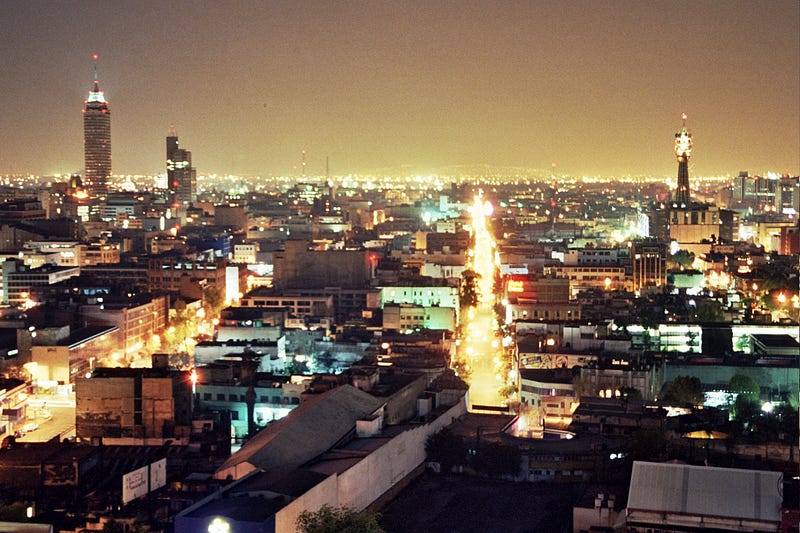
From a heavily light-polluted location (like most big cities), only the very brightest stars and planets are visible, even on an otherwise clear night. In order for starlight to get to your eyes, it has to compete with all the other light sources around. Cities like New York, Chicago and Los Angeles are so heavily light-polluted with a phenomenon called skyglow that you can typically only see a few dozen stars at night.
This type of light pollution is so severe that it doesn’t even make a difference whether there’s a Moon in the sky or not!

From a more suburban or rural locale, however, that’s no longer the case. Sure, there’s still a considerable amount of light pollution, but the number of stars you can see will jump from under a hundred to around a thousand! In addition, the brightest nebulous objects — like the Andromeda Galaxy — can be seen by the naked eye if the Moon isn’t out. It’s a spectacular difference, but not as spectacular as if you find a truly dark site to look at the sky from.
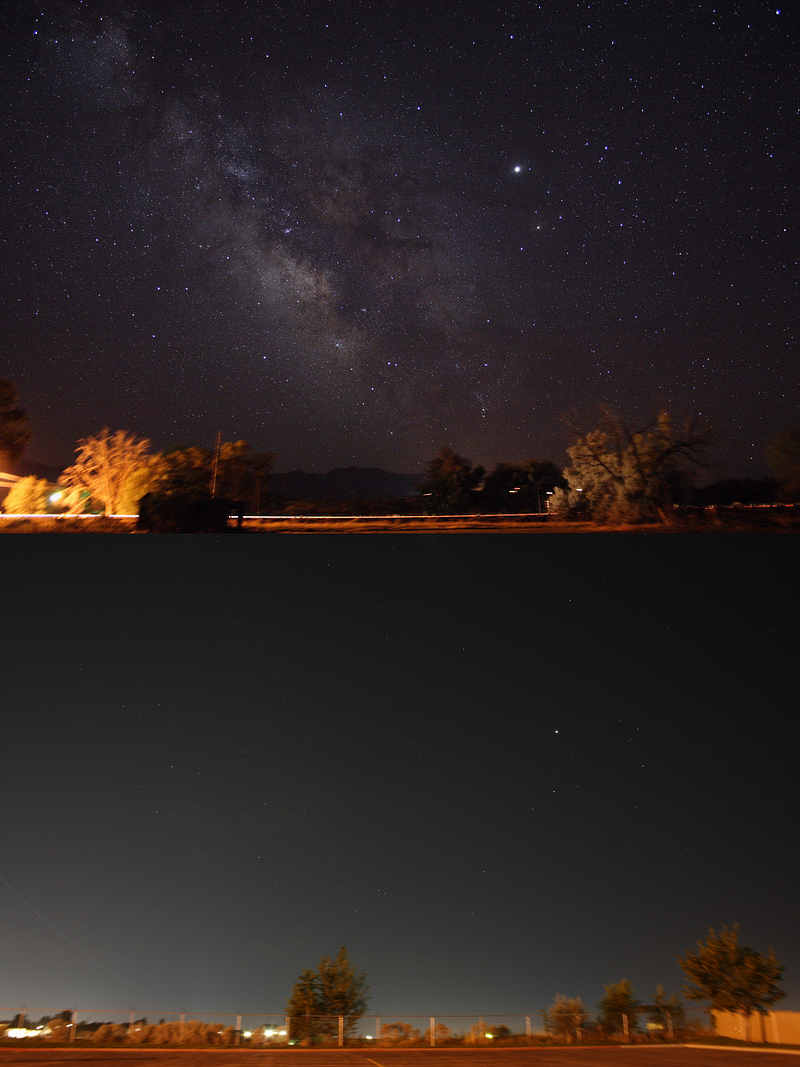
The number of stars visible leaps to somewhere between 6,000 and 45,000, the Milky Way becomes clearly visible on a Moonless night, and the different colors of the stars are apparent, too.
But even at super dark locations away from cities, with no Moon and no excessive lights, there are delineations. If you’re at a truly dark location, you’re in for a real treat.
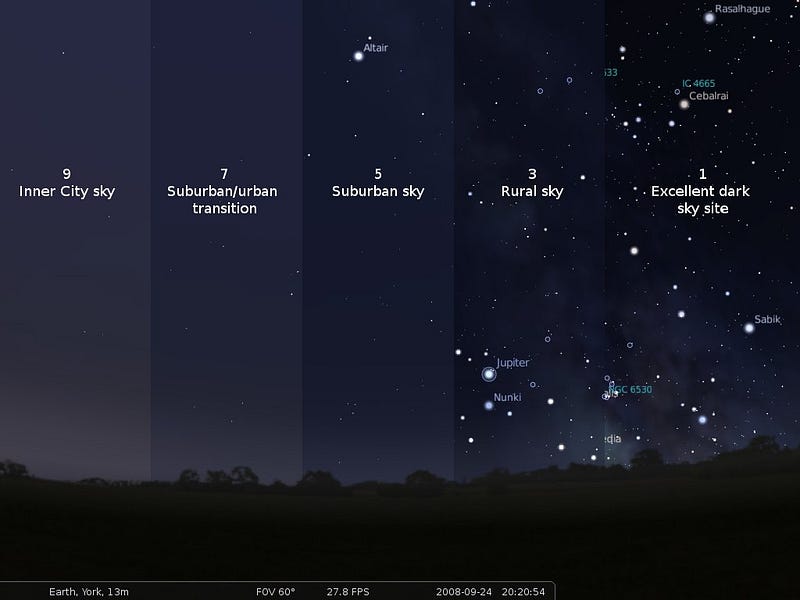
The Bortle Scale is the way we measure this, with color in the plane of the Milky Way coming out, and the even rarer sights of the Zodiacal light and the Gegenschein — which is reflected sunlight off of the dust in the plane of the Solar System — among the most spectacular treats.
But even at an optimally dark sky, a simple natural phenomenon can ruin your views of the heavens.

I’m talking about clouds, of course. And if the atmosphere is very turbulent, that can interfere with even excellent skies as well.
All of these factors — light pollution, clouds, and atmospheric turbulence — influence what a skywatcher can see. And if you intend on using a telescope, those three factors are going to impact you even more severely. This is why, if you want the best views of the Universe from Earth, you go to locations like this.
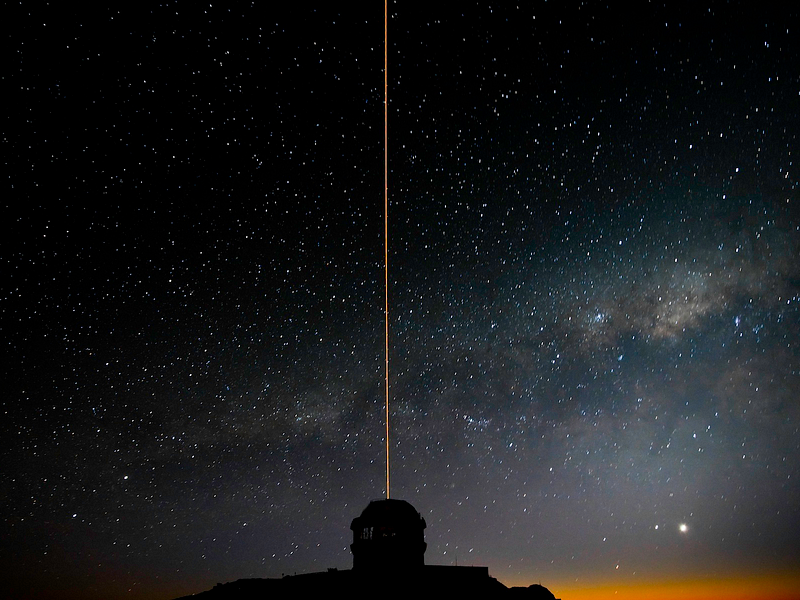
You go to a place where you’re at a high elevation, above the cloud line and above most of the atmosphere. You go to a location far away from any big cities or other light pollution sources (like squid fisheries), and where the air that is present is mostly still.
That’s really the best thing you can do, short of launching your telescope into space.
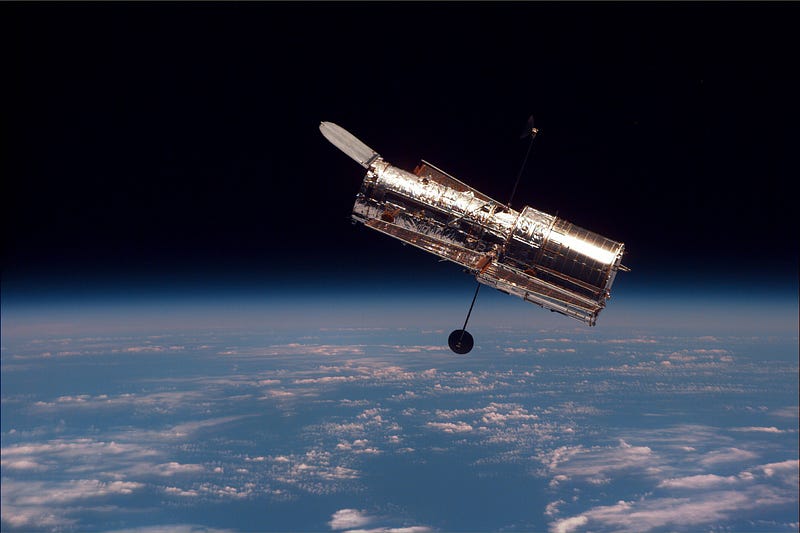
So with all that in mind, you might think that being on a plane flight at night, some 30,000 feet (9 kilometers) above the ground, might be the ideal place for seeing the wonders of the night sky.
But if you’ve ever looked out of an airplane window at night, you could maybe see the Moon, or a couple of the brightest planets (like Mars, Jupiter or Venus), but little else. Except, of course, for any Earthly lights below.
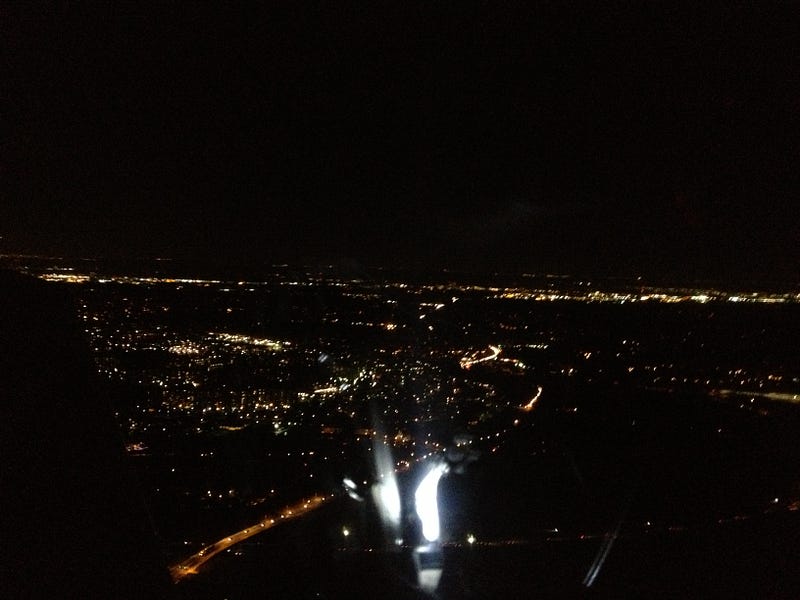
And this is true; you can easily verify it for yourself. Why is that?
You can understand this pretty easily if you think about being in your own house at night. If you have the lights on inside but it’s dark outside, who can see what?

From outside the house, someone looking in can see everything you’re up to. But if you want to see what’s going on outside, you need to turn off the lights inside and turn out the lights outside, don’t you?
As a general rule, it needs to be darker at the place where you’re looking from than the place you’re looking to, or you won’t be able to see much of anything. On the other hand, someone looking in can easily see you.
So what’s the deal in a plane?
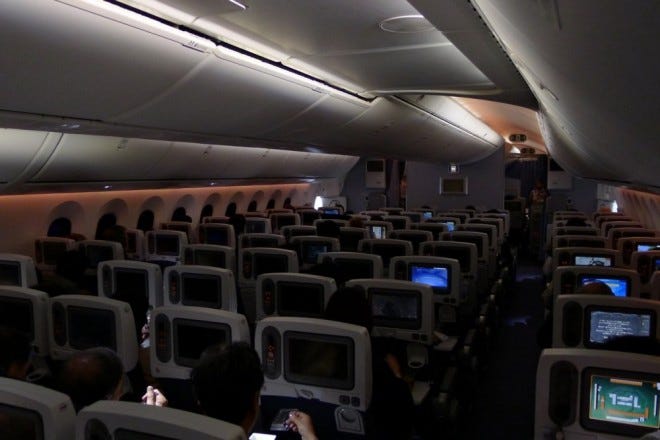
The lights are always on inside, and that heavily restricts what you can see outside! Believe it or not, that’s the only reason you can’t see the wonders of the night sky out of an airplane window.
If you managed to convince them to turn all of the cabin lights off — or you made your way into an old style, 1940s-or-earlier plane with no interior lights — you could have a nighttime view of the sky akin to the following.
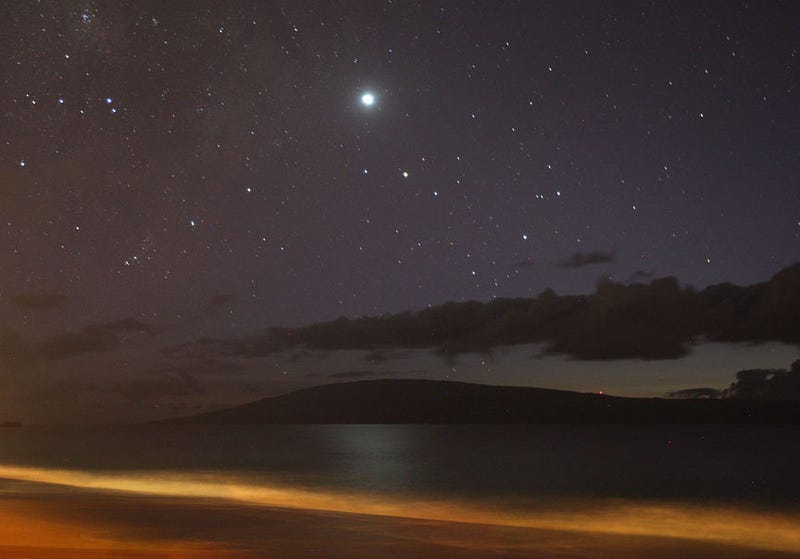
In fact, back in the early days of winged, heavier-than-air flight, pilots used to carry sextants with them, and actually navigated by the stars, the same as seafarers did in the days before GPS! Here’s an amazing photo of a navigator reading a sextant from an old British Royal Air Force plane dating from 1940.
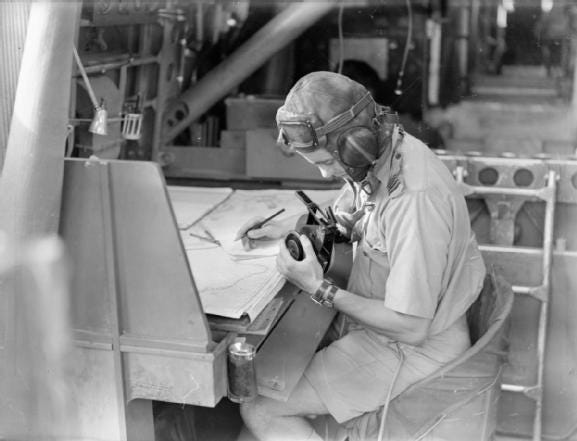
If it weren’t for the lights of the plane itself, you would, in fact, be able to have some of the best skies available to humans. Astronomers know this fact very well, in fact, and we actually have an airplane-mounted telescope that NASA flies: SOFIA!
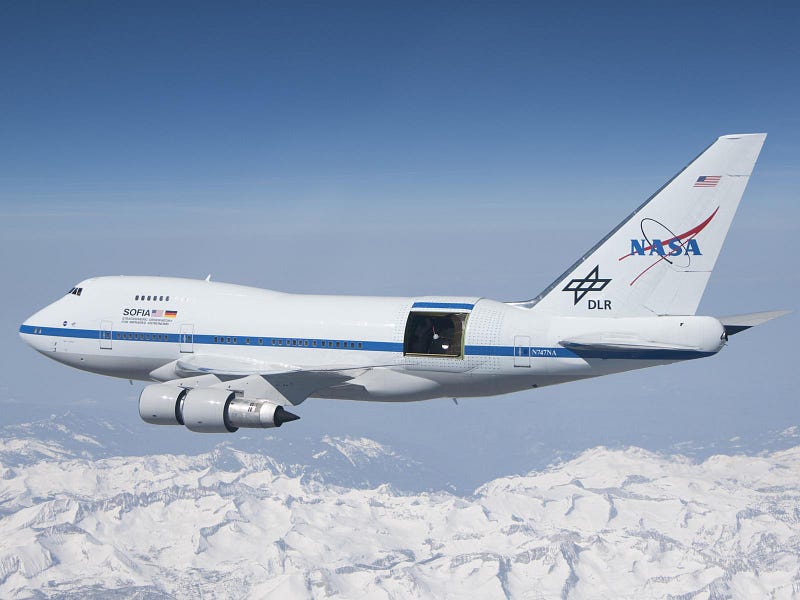
So if you want to see the stars out of an airplane window, just tell them to turn off the lights inside the cabin, and the Universe is yours!
Thanks for a great question, Leana, and I hope you all enjoyed this week’s Ask Ethan. If you have a question or suggestion you’d like to submit, you can do so here, and who knows? Next week’s edition just might feature you!
Have your say at the Starts With A Bang forum on Scienceblogs!





